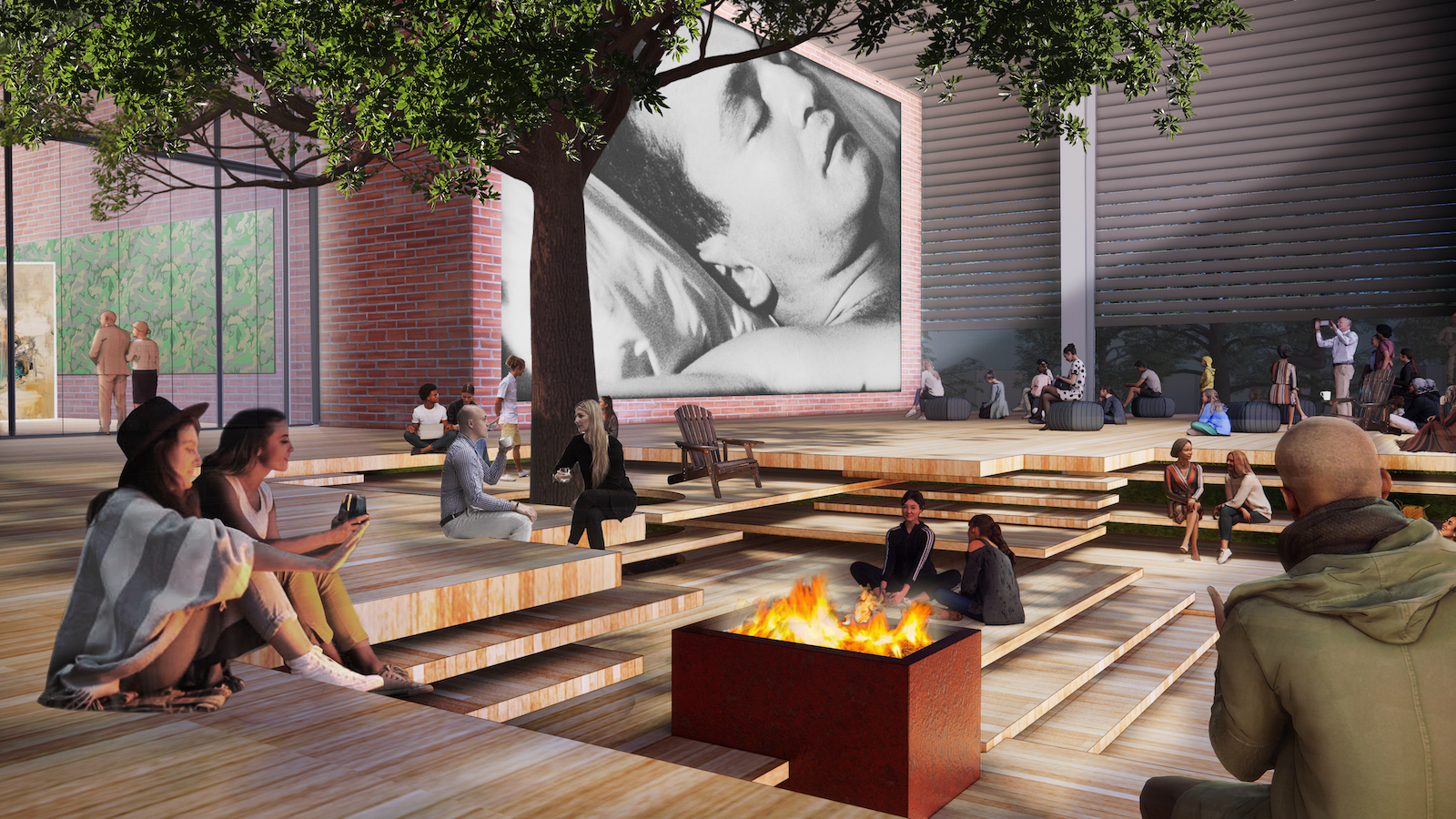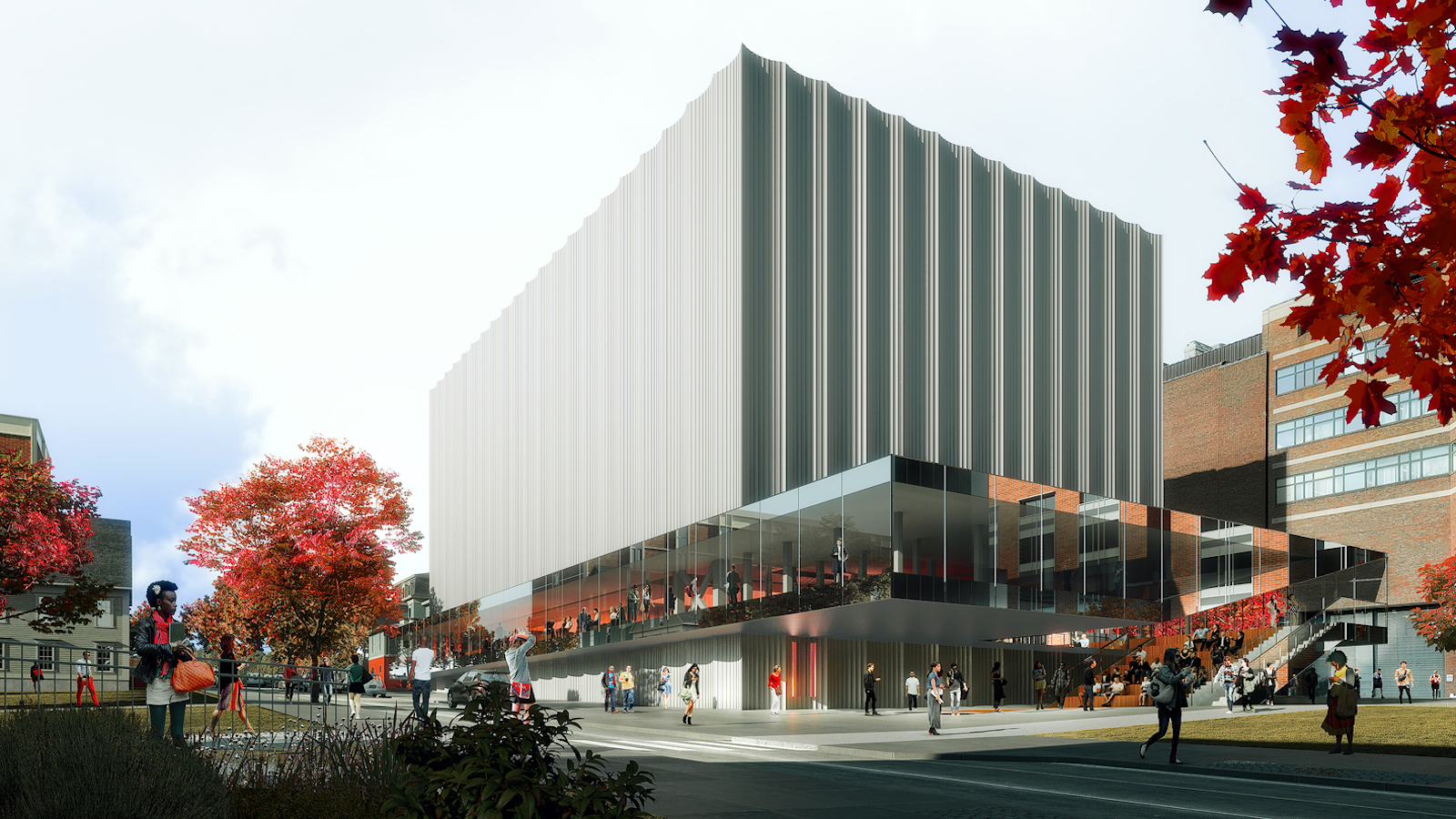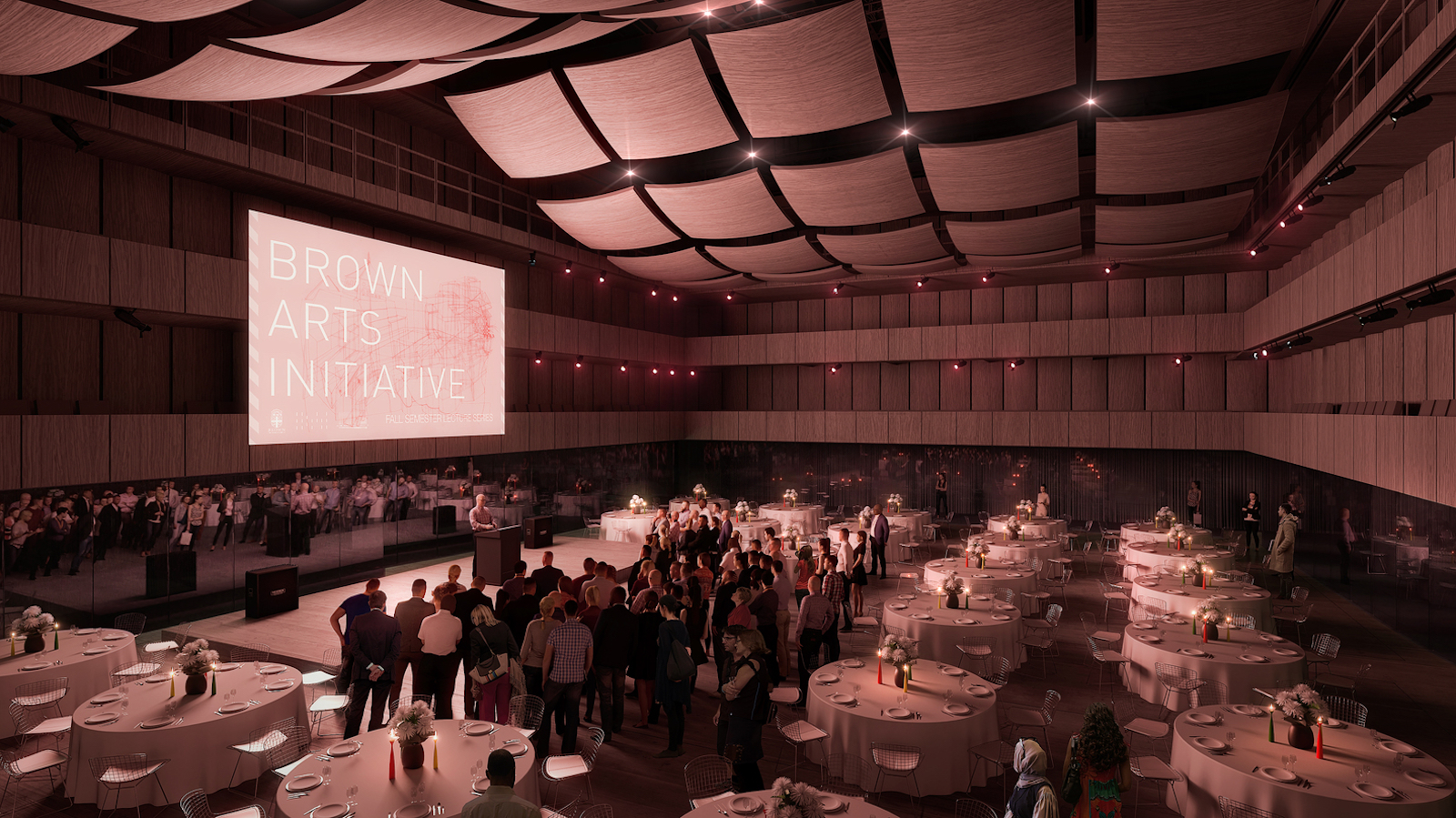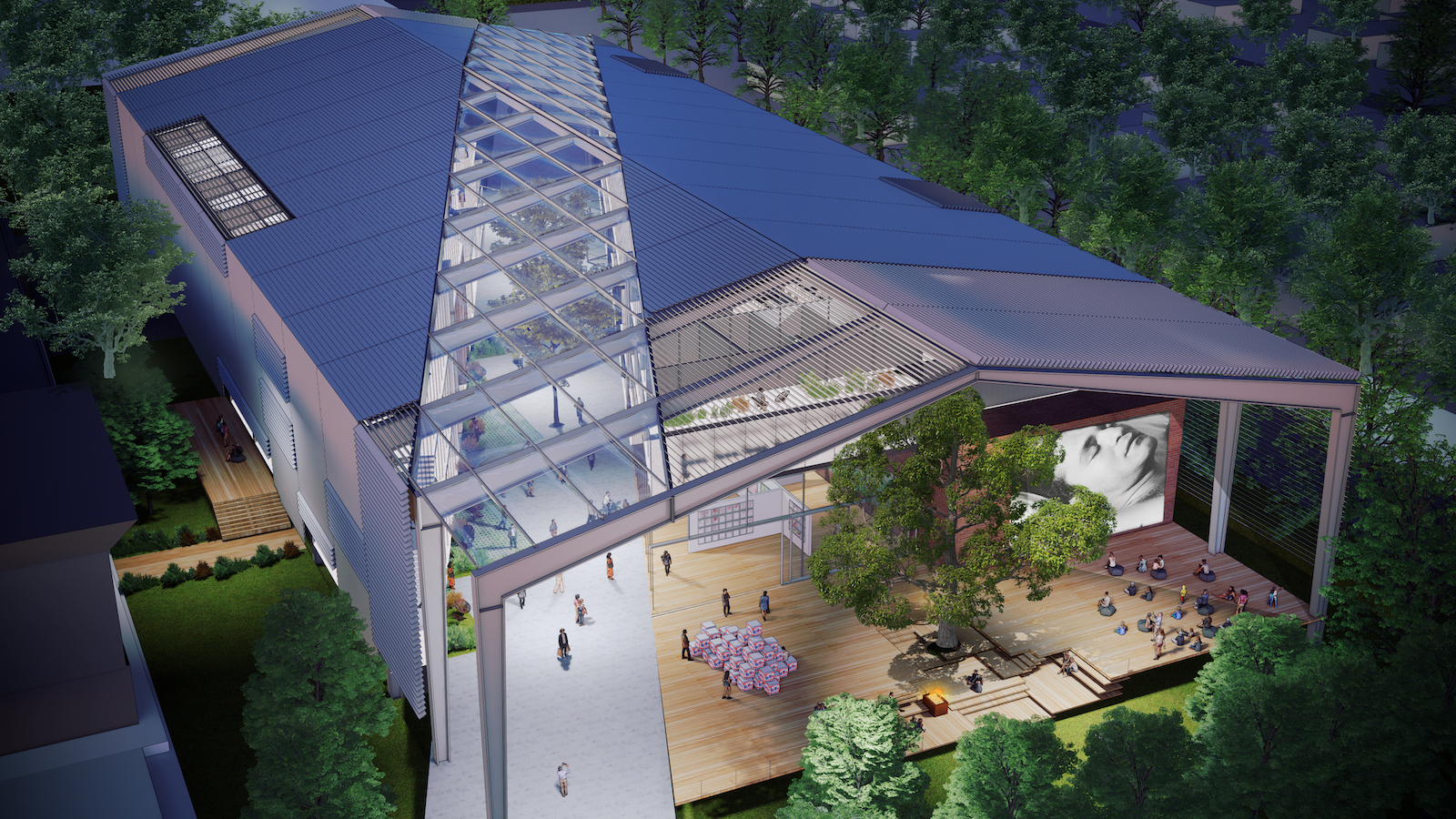A decade or so ago, Voith & Mactavish Architects was doing a lot of performing arts center design for independent secondary and prep schools. “In some ways, higher ed is now catching up” with the expectations of students, explains Daniela Voith, VMA’s Founding Partner and Director of Design, about cultural-related projects her firm has done for universities and colleges lately.
One recent example was the $60 million, 84,000-sf John and Joan Mullen Center for the Performing Arts at Villanova University in Pennsylvania. The LEED Silver-certified building, which was completed in the spring of 2020, is part of a major capital campaign to redevelop the campus’s southern area. The center features two theaters, with 400 and 200 seats respectively, and a 75-seat performance lab. VMA collaborated with Robert A.M. Stern Architects on the art center’s design. Bala Engineering, O’Donnell & Naccarato, and Nave Newell were the project’s engineers, and LF Driscoll provided construction management. The General Building Contractors Association bestowed its 2020 Best Cultural Institution Project Award on this arts center.

Voith isn’t alone in her belief that there’s a renewed recognition among universities that art and creativity “are part and parcel with what makes America succeed.” She also thinks that new and renovated arts centers can be weapons in the “arms race” being waged by universities and colleges that are raising their facilities and amenities to state-of-the-art levels to lure and retain students and faculty.
It might also be a coincidence, but several high-profile arts-related projects are in various stages of development or completion at a time when college enrollment in the U.S. in 2021 dropped for the second straight year, according to recent data from the National Student Clearinghouse Research Center, which estimates that enrollment was down 6.5 percent from pre-pandemic levels.
Integrating Arts And Education in Higher Education

In December, Princeton University in New Jersey—which, in truth, has no trouble attracting student applicants—started construction on its new Art Museum, which at 144,000 sf doubles the size of the museum it is replacing. Designed by Adjaye Associates in collaboration with Cooper Robertson, the three-story Princeton University Art Museum will be a grid of nine pavilions showcasing selections from the museum’s expansive and growing collection, which numbers more than 112,000 items. The building will also house Princeton’s Department of Art and Archeology, and Marquand Library. James Corner Field Operations is the project’s landscape architect, and LF Driscoll provided pre-construction services. The museum is scheduled for completion in 2024. In the interim, the museum will operate two gallery spaces in downtown Princeton, and is planning two outdoor exhibit spaces.
That same month, on December 10, a building team led by the construction management firm Shawmut Design and Construction and the architecture firm REX, celebrated a virtual topping off of Brown University’s 94,000-sf Performing Arts Center, which is scheduled for completion in the spring of 2023, and is utilizing integrated project delivery that incorporates subcontractors and the university into all phases of the project.
The vision for this PAC supports Brown’s 10-year strategic plan, Building on Distinction: A New Plan for Brown (2013), which commits the university to integrative scholarship, educational leadership, academic excellence, and campus development. “Brown is committed to the full integration of the arts into a complete liberal arts education,” the university states on its website. “We know that addressing some of the world’s most vexing challenges benefits from the creative problem-solving enabled by people who have studied and experienced the arts.”
The performing arts center will anchor a future arts district on Brown’s campus in Providence, R.I. Its main performance hall will feature five radically different preset spatial, acoustic, and technical configurations, from a 625-seat symphony orchestra to a 250-seat proscenium theater; as well as three smaller performance and rehearsal spaces below street level where students and faculty can create art works collaboratively. The building’s exterior aluminum rainscreen will appear to shift in color and pattern with time-of-day and seasonal changes.
The performing arts center project is anticipated to achieve a minimum of LEED silver certification. (Brown’s stated policy is not to release cost information until a project is completed.)
Recalling the Past, Without the Obsolescence

Another arts education project that’s drawn attention is Diller Scofidio + Renfro’s (DS+R) design for the Susan and Fayez Sarofim Hall, a $25 million, 50,000-sf building for visual and dramatic arts students, situated on the Houston campus of Rice University. Sarofim Hall, which is scheduled to break ground this year and be completed in 2024, will add to Rice’s already vibrant cultural district that includes the Moody Center for the Arts (which opened in 2017), the newly constructed Brockman Hall for Opera, and Shepherd School of Music’s Alice Pratt Brown Hall.
Rice’s Visual and Dramatic Arts department is one of the university’s most popular, with 900 students per year.
“Cross-disciplinary discourse is a hallmark of the arts in the 21st century, but it has been difficult at Rice since its facilities are scattered all over campus,” observes Charles Renfro, a Partner at DS+R and a Rice graduate. “Sarofim Hall will not only bring these programs together for the first time, but also facilitate experimentation and collaboration between disciplines through open, transparent, indoor/outdoor and public-facing space.”
DS+R’s design recalls the campus’s now-defunct Art Barn and Rice Media Center, which date back to the late 1960s, and the mass-produced pre-engineered metal structures that were popular after World War II. (Art Barn, which was officially known as the Institute for the Arts, was torn down in 2014, and The Media Center is being razed to make way for Sarofim Hall.)
The prefabricated Sarofim Hall will incorporate exhibition areas, labs, studios, shops, faculty offices, and other collaborative spaces for artists across all media. The building’s design frees the steel frame from its skin, and blurs the boundaries between maker and exhibition spaces.
The studios and facilities are designed to guard against obsolescence by encouraging students to fashion their work areas according to their artistic needs. “The building shell is thought of as a piece of infrastructure: simple, durable, and timeless, while the insides can transform as needs change,” Renfro is quoted as saying.
Sarofim Hall’s distinguishing characteristics include Art Street, a glass-lined walkway that cuts diagonally through the four-story building and will serve as a new entrance to the university; and West Porch, a covered outdoor area for such programming as classes, exhibits, and film screenings.
“DS+R’s initial concept for the new building cleverly weaves the symbolism of that history with the scale, materiality, and ‘porosity ’of the broader campus fabric,” adds University Architect George Ristow. “With the building being at the outward-facing perimeter—and at an entrance into campus that has evolved into one of the most active and dynamic access points—it will undoubtedly have a different kind of visibility beyond the hedges that will be leveraged as a new and unique gateway to the Rice arts corridor.”
The project team for Sarofim Hall includes Jackson & Ryan Architects (executive architect), OJB Landscape Architecture (LA), Fisher Dachs Associates (theater consultant), Threshold (acoustics/AV), Martinez Moore (SE), Walter P Moore (CE), and Wylie Associates (MEP). The university did not identify the project’s construction manager or general contractor.
Related Stories
| Aug 11, 2010
Biograph Theater
Located in Chicago's Lincoln Park neighborhood, Victory Gardens Theater Company has welcomed up-and-coming playwrights for 33 years. In 2004, the company expanded its campus with the purchase of the Biograph Theater for its new main stage. Built in 1914, the theater was one of the city's oldest remaining neighborhood movie houses, and it was part of Chicago's gangster lore: in 1934, John Dillin...
| Aug 11, 2010
Top of the rock—Observation deck at Rockefeller Center
Opened in 1933, the observation deck at Rockefeller Center was designed to evoke the elegant promenades found on the period's luxury transatlantic liners—only with views of the city's skyline instead of the ocean. In 1986 this cultural landmark was closed to the public and sat unused for almost two decades.
| Aug 11, 2010
Putting the Metal to the Petal
The Holocaust and Human Rights Center of Maine was founded in 1985, but the organization didn't have a permanent home until May 2008. That's when the Michael Klahr Center, which houses the HHRC, opened on the Augusta campus of the University of Maine. The design, by Boston-based architects Shepley Bulfinch Richardson & Abbott, was selected from among more than 200 entries in a university-s...
| Aug 11, 2010
Jefferson Would Be Proud
The Virginia State Capitol Building—originally designed by Thomas Jefferson and almost as old as the nation itself—has proudly served as the oldest continuously used Capitol in the U.S. But more than two centuries of wear and tear put the historical landmark at the head of the line for restoration.
| Aug 11, 2010
Let There Be Daylight
The new public library in Champaign, Ill., is drawing 2,100 patrons a day, up from 1,600 in 2007. The 122,600-sf facility, which opened in January 2008, certainly benefits from amenities that the old 40,000-sf library didn't have—electronic check-in and check-out, new computers, an onsite coffeehouse.
| Aug 11, 2010
American Tobacco Project: Turning over a new leaf
As part of a major revitalization of downtown Durham, N.C., locally based Capitol Broadcasting Company decided to transform the American Tobacco Company's derelict 16-acre industrial plant, which symbolized the city for more than a century, into a lively and attractive mixed-use development. Although tearing down and rebuilding the property would have made more economic sense, the greater goal ...
| Aug 11, 2010
Bronze Award: Alumni Gymnasium Renovation, Dartmouth College Hanover, N.H.
At a time when institutions of higher learning are spending tens of millions of dollars erecting massive, cutting-edge recreation and fitness centers, Dartmouth College in Hanover, N.H., decided to take a more modest, historical approach. Instead of building an ultra-grand new facility, the university chose to breathe new life into its landmark Alumni Gymnasium by transforming the outdated 99-y...
| Aug 11, 2010
Fleet Library, Rhode Island School of Design
When tasked with transforming an early 1920s Italian Renaissance bank building into a fully functional library for the Rhode Island School of Design, the Building Team for RISD's Fleet Library found itself at odds with the project's two main goals. On the one hand, the team would have to carefully restore and preserve the historic charm and ornate architectural details of the landmark space, d...
| Aug 11, 2010
Gold Award: The Lion House, Bronx Zoo Bronx, N.Y.
Astor Court sits at the heart of the 265-acre Bronx Zoo, and its six Beaux Arts buildings were constructed at the turn of the 20th century to house exotic animals from around the world. When the Lion House was built in 1903, the brick and limestone facility was considered state-of-the-art, but as standards of animal care advanced, the lions were moved into a more natural setting, and the Lion H...
| Aug 11, 2010
The pride of Pasadena
As a shining symbol of civic pride in Los Angeles County, Pasadena City Hall stood as the stately centerpiece of Pasadena's Civic Center since 1927. To the casual observer, the rectangular edifice, designed by San Francisco Classicists John Bakewell, Jr., and Arthur Brown, Jr., appeared to be aging gracefully.







